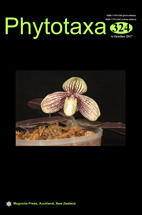Abstract
To assess the classification of East Asian taxa in Oxalis subsect. Oxalis, samples from a wide geographical area were examined using molecular phylogenetic, cytological and morphological analyses. The phylogenetic analysis showed the early branching of O. leucolepis and O. obtriangulata in East Asia, followed by that of O. acetosella and O. oregana in North America. The remaining Eurasian samples were divided into four clades: taxa from Mainland China and Taiwan (Clade A); O. acetosella from Eurasia including Japan (Clade B); O. griffithii from Japan (Clade C); and O. griffithii plus some O. acetosella from Japan (Clade D). Therefore, O. acetosella and O. griffithii are not monophyletic species. In the flow cytometric analysis, three diploid groups with different relative genome sizes were distinguished, and were placed in each of Clades A, B, and C plus D; tetraploids were found in Clades C and D. Morphologically, most pairs of samples had distinguishing characters that were informative for delimitation. However, the characters of O. griffithii in Clades A and C (including tetraploids) were not informative, and diploids and tetraploids in Clade C did not morphologically differ. These results demonstrate the necessity for a taxonomic revision of this subsection.

